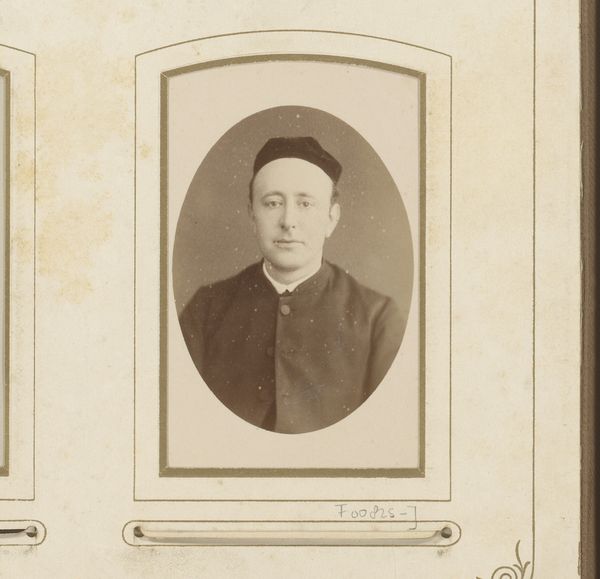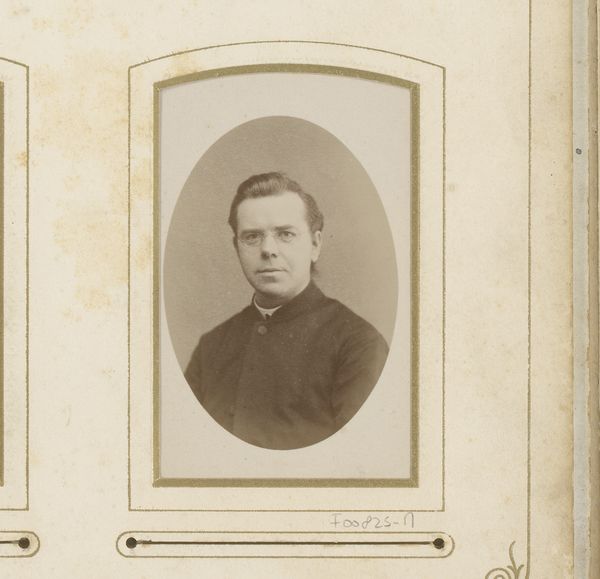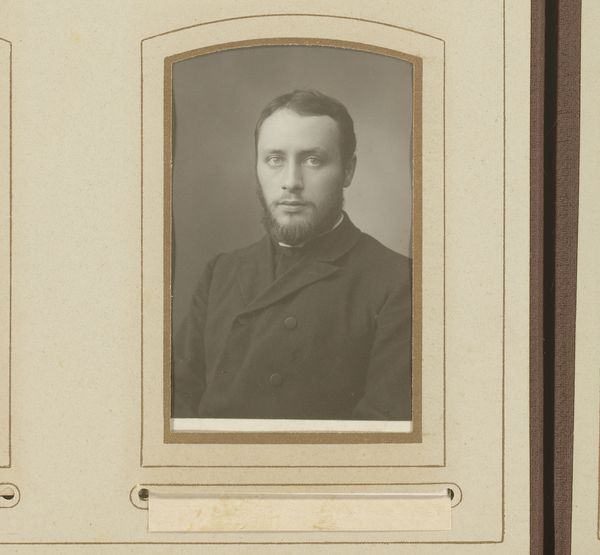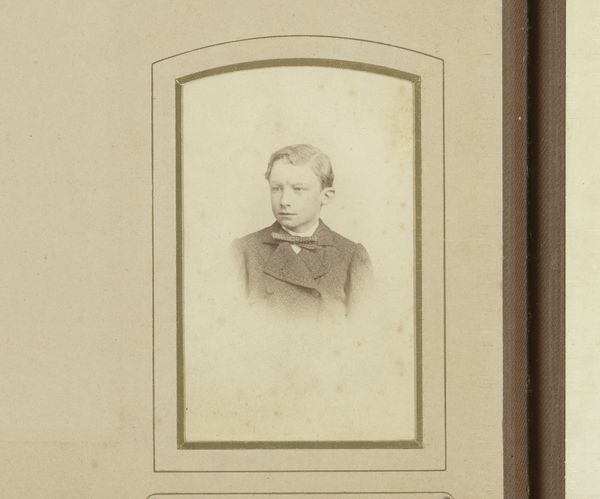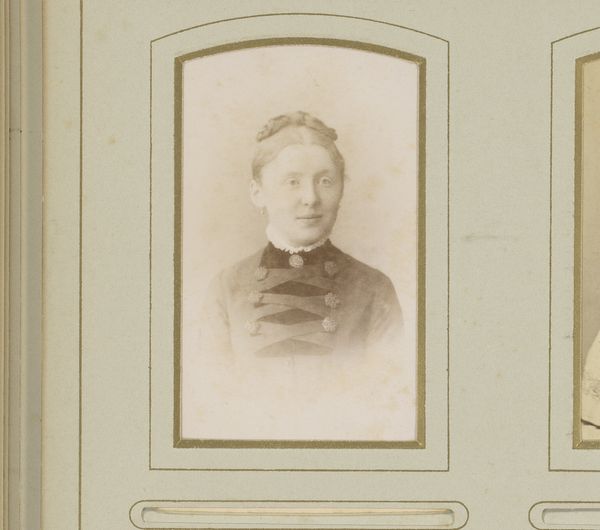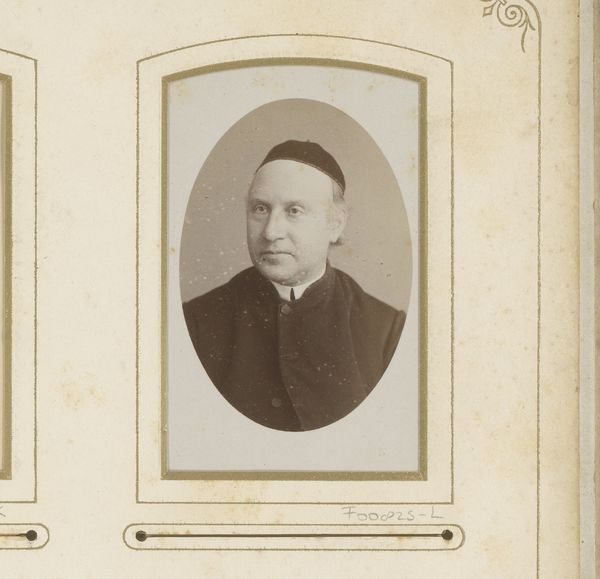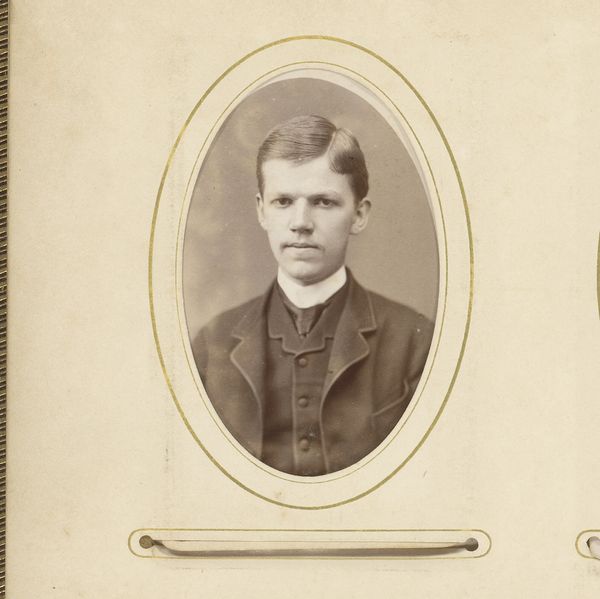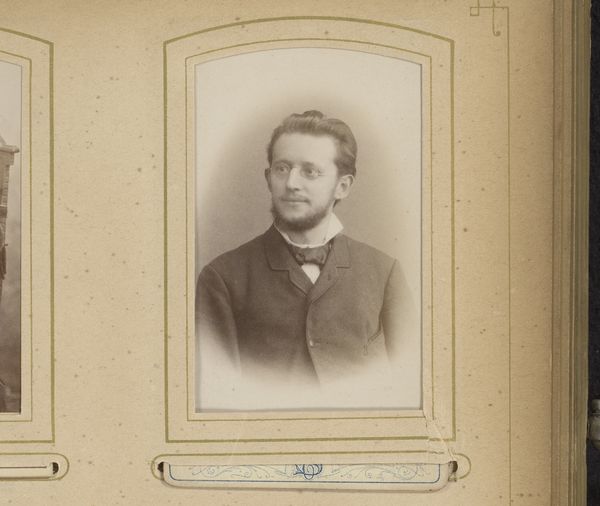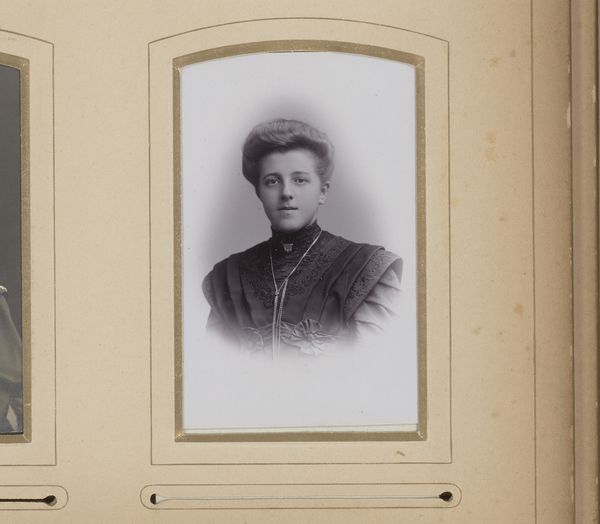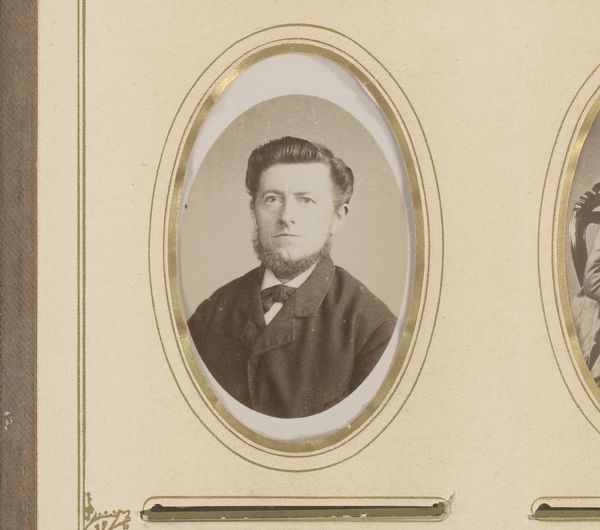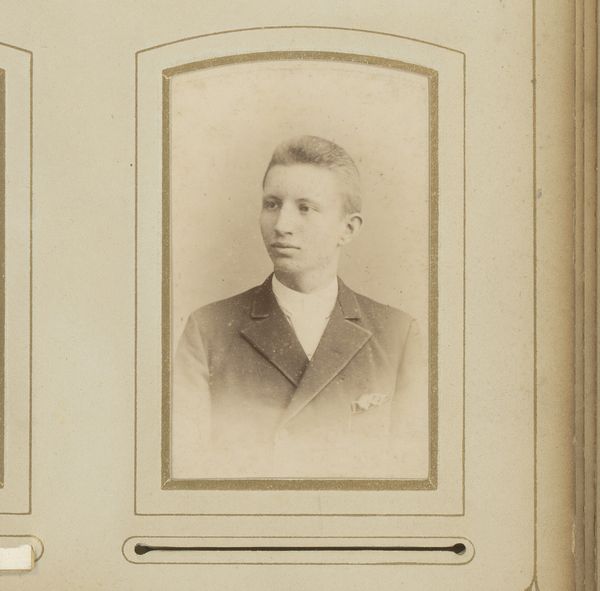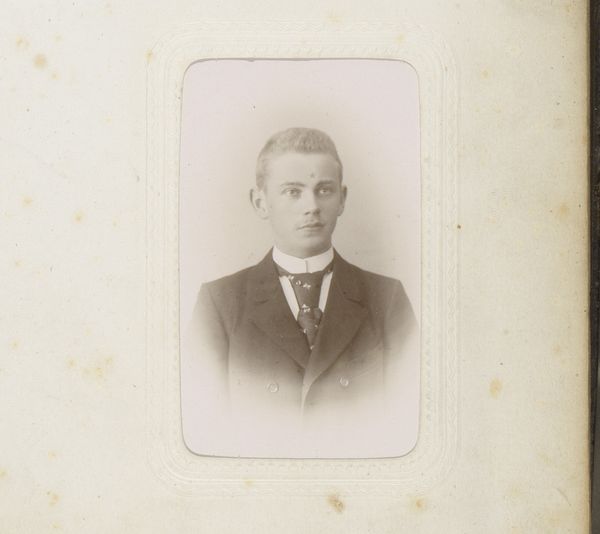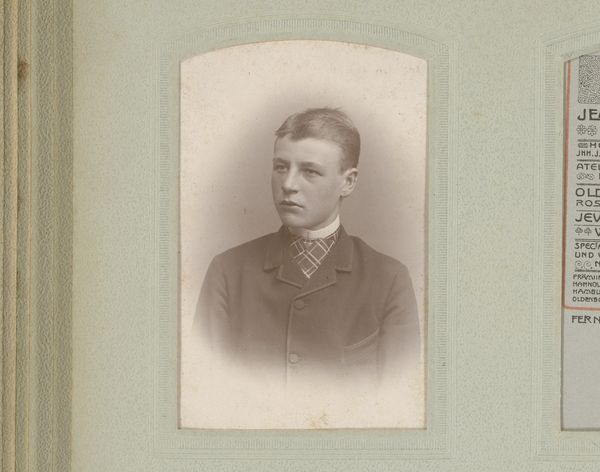
Dimensions: height 86 mm, width 53 mm
Copyright: Rijks Museum: Open Domain
Curator: Well, hello! What do we have here? "Portret van een geestelijke," or "Portrait of a Clergyman," taken sometime between 1880 and 1888 by Johannes Wilhelmus Franciscus Offenberg. It’s a gelatin-silver print, capturing a distinguished-looking fellow. What leaps out at you? Editor: Hmm, the way the light seems to almost dissolve the edges of his form. He's there, present, but also slightly ethereal, like a memory fading into the past. The spectacles certainly pin him to a certain historical reality, yet the soft focus feels dreamlike. Curator: Precisely! The Pictorialist style really lends itself to that dreamlike quality. It’s all soft focus and atmospheric effects, quite Romantic. The use of gelatin silver printing allowed for a great range of tones, that subtle shading...makes him seem almost luminous, doesn’t it? Editor: Absolutely. And there’s the clothing. We recognize the symbols immediately—the collar, the simple black cap. Instantly signalling authority, and a certain kind of knowledge. And let’s be honest, power too. Curator: Good point. His gaze is so direct, though, it’s hard to peg him as purely authoritarian. There’s a kind of intelligence there, behind those lenses. Almost inviting…dare I say, playful curiosity? Or is that the Pictorialist effect working its magic again? Editor: Perhaps both. The blur softens the hard edges of authority, the trappings of religion... It lets us glimpse a personality, a humanity perhaps hidden behind the office. Photography was in its relative infancy at the time. Images such as this helped standardize visual rhetoric across social strata. Curator: It's like he’s caught between two worlds: the earthly world that required clear images and the ethereal, art-focused realm of artistic photography. Editor: Yes, a portrait capturing both the public role and a private moment. Very moving in its quietude, actually. Curator: Absolutely. A ghostly presence of the past that’s speaking right here in the present. A face to a historical period in a bottle. Editor: Quite. Thank you for sharing.
Comments
No comments
Be the first to comment and join the conversation on the ultimate creative platform.
